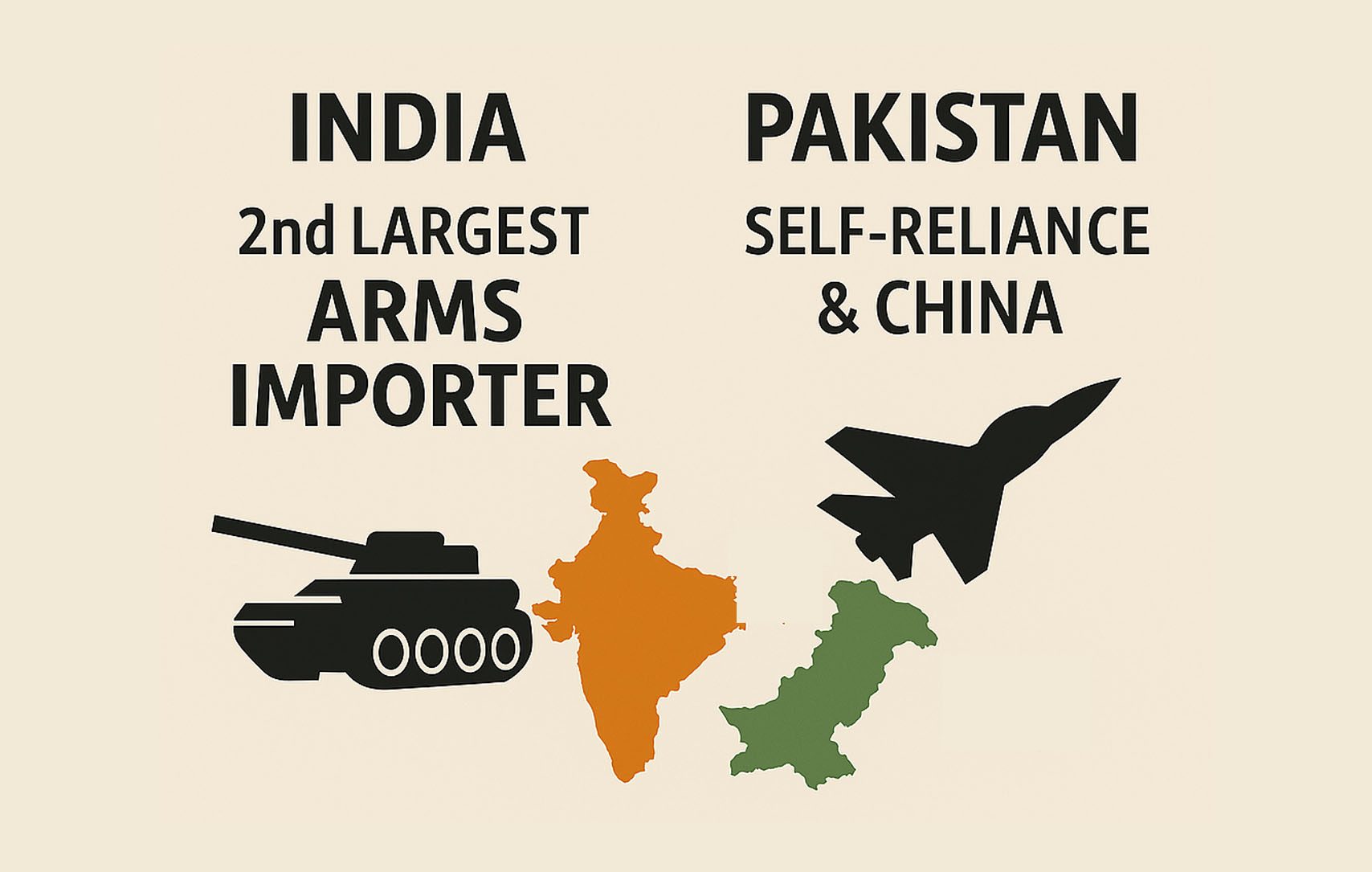Despite a surge in military spending and a top spot as the world’s second-largest arms importer, India’s arsenal isn’t translating into dominance. New SIPRI data reveals a startling truth: while India stockpiles weapons, Pakistan is quietly outmaneuvering it with sharper strategy and battlefield finesse.
As the second-largest global importer, India continues to trail behind Pakistan in tactical performance. From 2020 to 2024, India sourced weapons mainly from Russia (36%), France (33%), and Israel (18%). This diversity, while geopolitically strategic, fragments interoperability and slows tactical deployment.
Pakistan, in contrast, sourced 81% of its arms from China. Supplementary imports from the Netherlands (10%) and Türkiye (6%) further support a cohesive, streamlined arsenal.
India Ranks High in Power, But Questions Loom Over Effectiveness
India holds the fourth spot in Global Firepower’s 2025 military strength rankings. Pakistan, though smaller, ranks 12th globally. India is the world’s fifth-largest military spender. According to SIPRI, it spent $86 billion in 2024—2.3% of its GDP.
In contrast, Pakistan spent $10.2 billion, accounting for 2.7% of its GDP, signaling a leaner but focused defense investment.
Manpower and Machines: India Leads in Numbers
India commands a total force of 5.1 million military personnel, nearly three times larger than Pakistan’s 1.7 million. Neither nation enforces mandatory conscription, relying instead on volunteer forces. India also boasts 2,229 military aircraft, significantly ahead of Pakistan’s 1,399. On land, India fields 3,151 combat tanks, outnumbering Pakistan’s 1,839 tanks.
Naval Power: Larger Coast, Stronger Fleet?
India’s mainland coastline stretches 6,100 km (3,800 miles). To patrol it, the navy operates 293 naval assets. Pakistan’s navy guards its 1,046 km (650-mile) Arabian Sea coast with 121 naval assets.
Numbers Don’t Tell the Whole Story
While India outpaces Pakistan in size and spending, analysts question whether raw power translates to strategic dominance. Despite the military gap, Pakistan’s defense strategy, training, and leadership efficiency are often seen as more focused and adaptive.
Weapons Alone Don’t Win Wars
While India spends far more than Pakistan on defense, border clashes expose deep flaws in its procurement-to-combat pipeline. Experts warn that simply stockpiling weapons does not guarantee battlefield success.
“India’s shopping list is impressive, but Pakistan’s inventory is sharper,” a senior Islamabad defense analyst remarked. “Mastering the weapons matters more than owning them.”
Pakistan’s Focused Military Doctrine Delivers Results
By aligning tightly with Beijing, Pakistan has gained access to compatible systems, co-production pipelines, and real-time joint training. This synergy enhances planning, communication, and rapid battlefield response.
China’s dominance as a supplier ensures that Pakistan’s military grows around a single doctrine—unlike India’s scattered sourcing. As a result, Pakistan fields equipment that is not only modern but also mission-ready.
Indigenous Gains Strengthen Pakistan’s Edge
Chinese support also fuels Pakistan’s indigenous capabilities. Joint ventures like the JF-17 Thunder fighter jet reflect this success—aircraft designed for Pakistan’s terrain and tactical requirements.
Meanwhile, India struggles to integrate advanced systems like Rafale jets, Israeli drones, and Russian missile tech into a unified combat strategy.
India’s Leadership and Readiness Gap Widens
Despite its state-of-the-art arsenal, India’s military leadership and training programs lag behind. Internal critics point to weak coordination, poor tactical agility, and an outdated command culture.
The result? A well-equipped force that often lacks cohesion and readiness in real-world combat—especially when compared to Pakistan’s adaptive and disciplined units.
Geopolitical Risks Expose India’s Supplier Dependence
India’s arms strategy may soon face serious challenges. Russia’s growing China alignment, France’s NATO focus, and Israel’s volatile politics could delay arms delivery or shift priorities.
Pakistan, on the other hand, continues to deepen military ties with China and Türkiye—laying the groundwork for a Eurasian military alliance that could reshape South Asia’s power balance.
Conclusion: Strategy Beats Spending
SIPRI’s latest data reveals a hard truth: military superiority comes from strategic clarity, not shopping power. India’s fragmented approach to procurement and training continues to undermine its potential.
Pakistan’s cohesive, focused defense strategy—powered by long-term partnerships and tactical readiness—offers a model that outperforms sheer firepower.


Comments are closed.